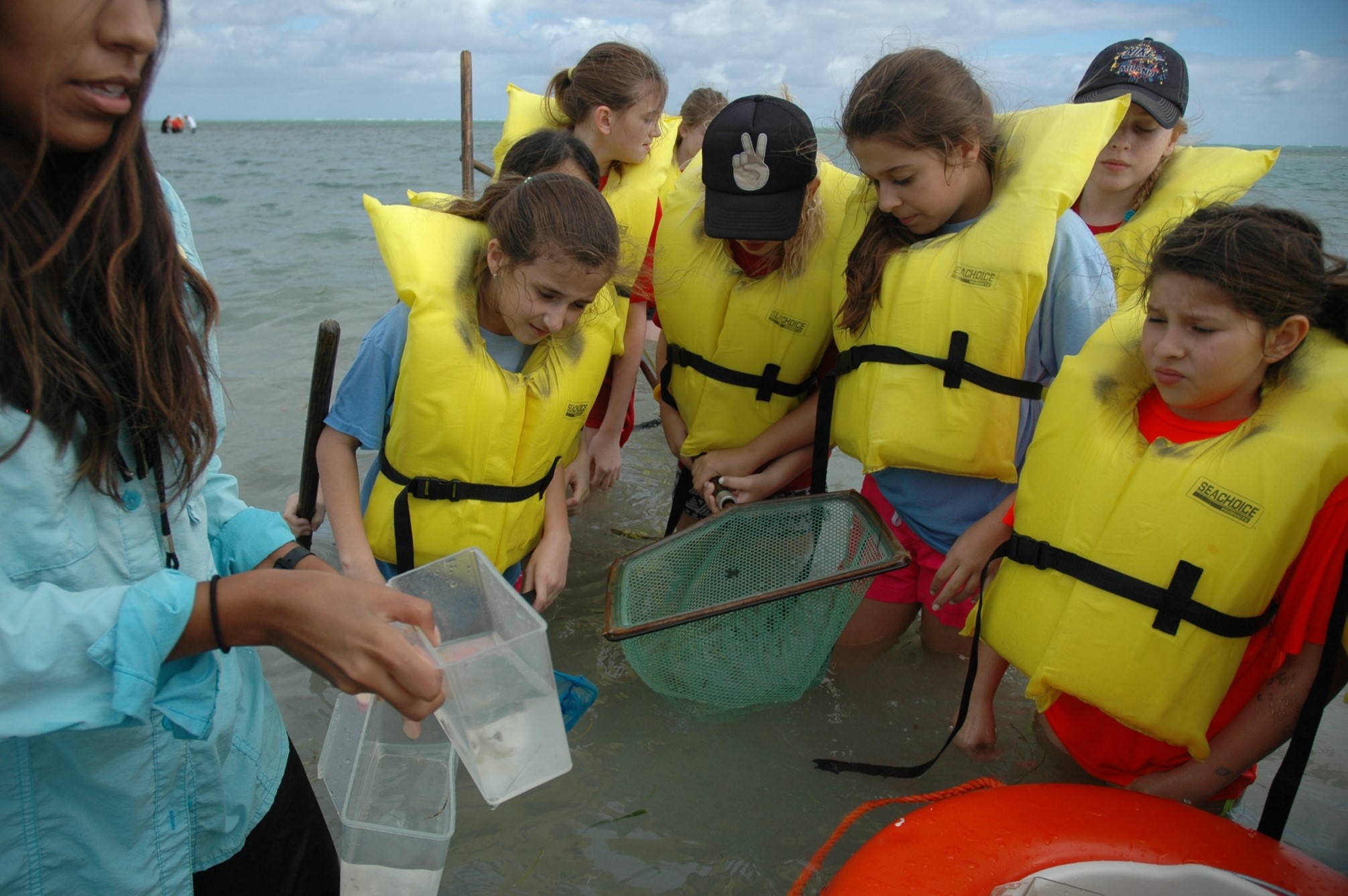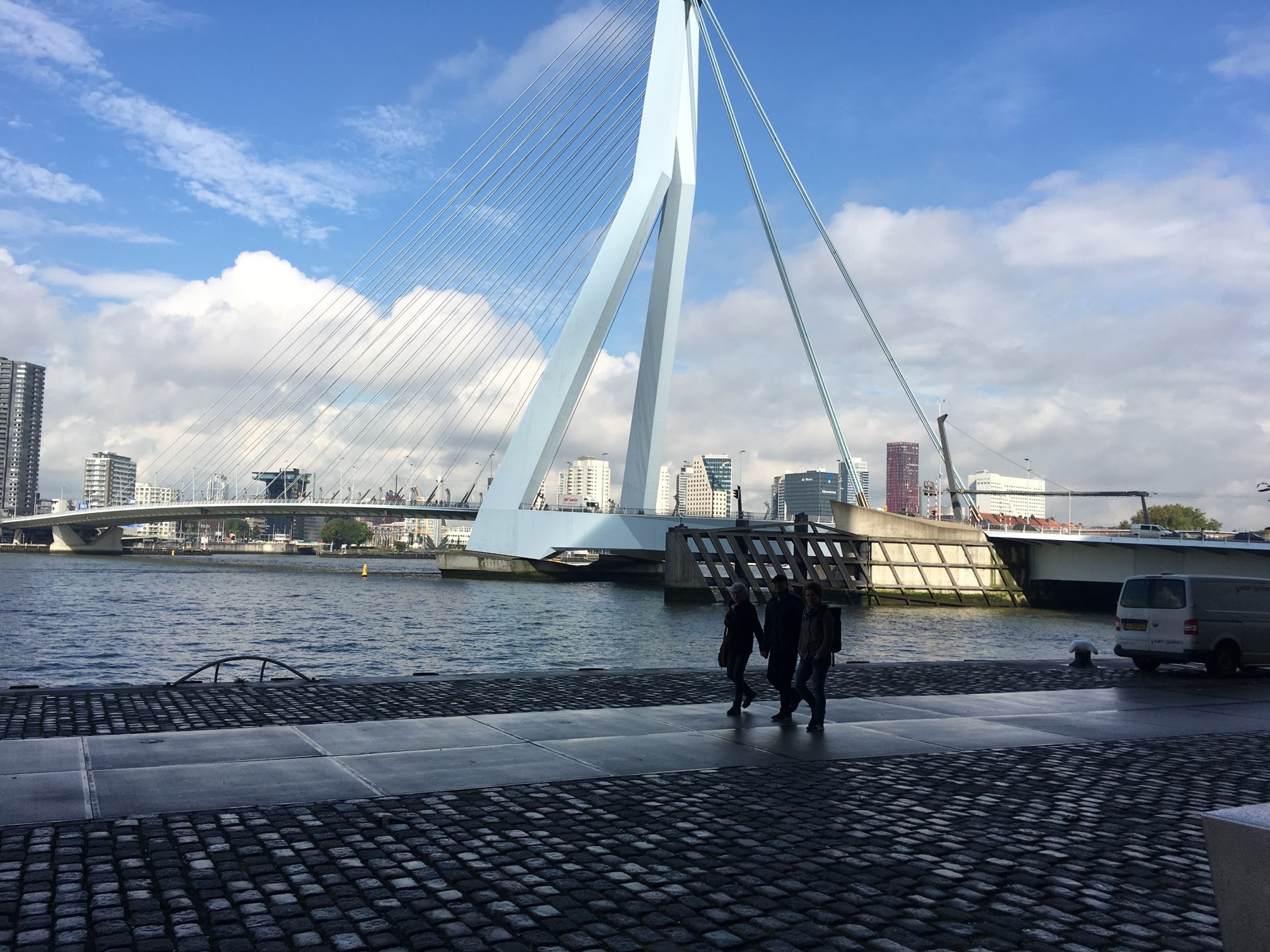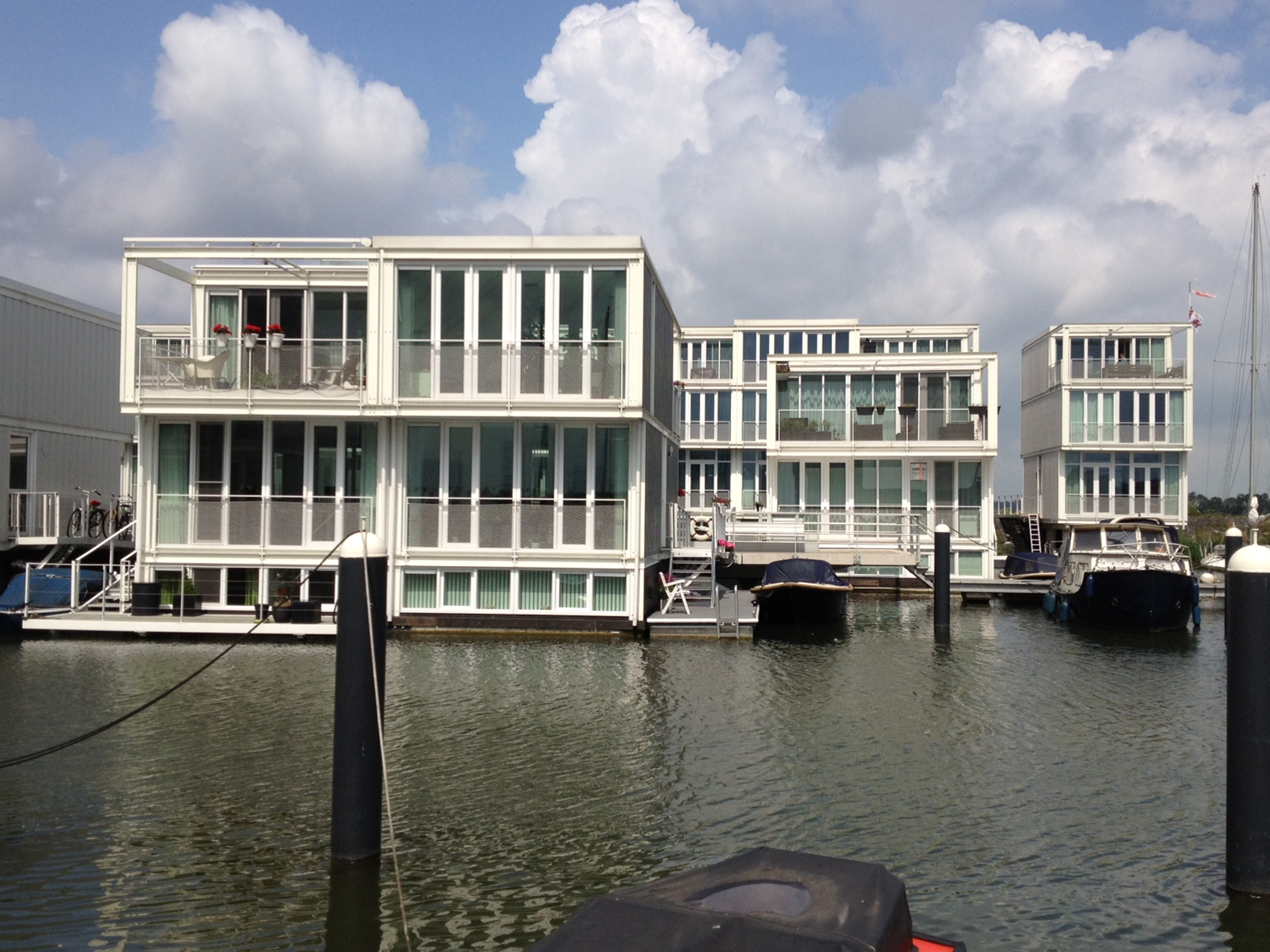
This is part of our special feature on Water in Europe and the World.
We live on the Blue Planet, as oceanographers like Sylvia Earle remind us, but we are also increasingly the Urban Planet. How to reconcile these two realities, and how to integrate them into a unified vision of future cities is a major challenge and a topic I have been working on for many years. In 2018, we completed work on a documentary film exploring connections between cities to the sea around them, and attempting to provide some of the possible elements of this new vision and agenda. The film, based largely on my 2014 book Blue Urbanism, tells compelling stories of how the sea surrounding us in cities sustains and elevates, creates wonder and meaning in life in the lives of the urbanites nearby.[1] The nearby and not-so-nearby sea is the potential source of meaning, connection, and fascination for urban residents, which is a key premise of blue urbanism. But the sea is also (increasingly) an element of danger in urban life, as climate change delivers ever more ominous storms and serious sea level rise.
Our film Ocean Cities profiles some of the most ambitious efforts by coastal cities, such as Rotterdam, to adapt to and effectively address these dangers. These two themes of danger and delight represent a kind of paradox for blue cities. As coastal and harbor cities like New York and Copenhagen have seen, their waters and near-shore habitats become cleaner and more hospitable, more and more people want to be near and directly experience this blue nature at precisely the time when the dangers are growing. So cities face the challenge of delicately balancing these dual demands and impulses. As our film shows, there are indeed cities managing to respond to both pulls.
The Wonder and Wildness of the Urban Blue
That contact with water delivers tremendous benefits and therapeutic value is undeniable. In the opening scene of our film, I discuss this with Wallace J. Nichols (or J as he is known), author of the popular book Blue Mind. The longish subtitle of this book says it all: “The Surprising Science That Shows How Being Near, In, On, or Under Water Can Make You Happier, Healthier, More Connected, and Better at What You Do.”[2] It’s an exhaustive review of how we respond to water and the “medicine” that seeing, feeling, touching, and immersing ourselves in water delivers, and little doubt that there are compelling reasons we want to live near water and coastal edges. We walked along the spectacular beach at Carmel by the Sea in California as Nichols described the many ways that contact with water enhances human life. It is the backdrop to a meaningful life, he says, the places where we think deeply, where we connect, where we forge deep personal life commitments. Water, he tells me, is “the backdrop to romance, to big ideas, it allows us to hear our thoughts more clearly. It’s a source of solace, of peace, a sense of freedom. It’s a place we go to grieve and to mourn. It’s a backdrop to every great part of our lives. I like to say that water gives us life and it makes life possible. But it also makes life worth living.”
The promise of marine wonder and wildness is part of what makes living in a coastal city special, part of its draw. One of my most vivid recollections from filming was a visit to the Marjory Stoneman Douglas Biscayne Nature Center, near Miami. We followed a group of fifth-graders as they waded into the Atlantic Ocean, accompanied by naturalists and given nets to collect what they could from the sandy bottom under their feet. It was a remarkable thing to watch, as the kids brought to the surface and marveled over some of the life sustained by this marine world. Suddenly there was a puffer fish, with “ohs” and “ahs” as the kids could not have imagined the life below (and were equally amazed after the puffer deflated and returned to what they believed a fish was supposed to look like). I don’t know for sure, but I suspect that the visit on that day was transformative for those kids. They lived not far away, but had likely not been in or near these waters before, and hopefully carried with them (forever?) a new amazement of the remarkable life sustained there. Contact with the wildness of the blue nature around cities has this power.

Fig 1: The wonder and delight of the marine world is all around in coastal cities but requires some efforts at cultivation and connection. Here, fifth graders from Miami area school participate in a program called the Seagrass Adventure, where they walk into the ocean collecting and observing marine life (often for the first time).
Much of my own work centers around the key idea of biophilia—written about and made popular by biologist and conservationist EO Wilson. It refers to the innate connection and attraction we have to nature, something on view that day spent with the fifth-graders. We have co-evolved with the natural world and so it is not surprising that we are happier, calmer, smarter, even more generous in the presence of nature. We have for several years been advocating for a model of cities that put that nature at the center, suggesting daily or even hourly contact with nature. We call these places Biophilic Cities, and in 2013, started a global network to bring these like-minded nature-centered cities together. That network is growing and gaining traction.[3]
Given that we live on the Blue Planet, and increasingly the Planet of Cities, it is entirely appropriate that we connect the urban and blue. As the Miami story shows, the marine realm is one of the most obvious and wondrous forms of biophilia and potential biophilic connection we have around us. The shorelines close-by and not-so close-by marine habitats and the biodiversity they support are important forms of nature that can contribute we believe to being healthier, happier, and to living more meaningful nature-connected lives. Cities like New York and Seattle and Baltimore have remarkable stories of connecting residents to the sea around them. There is the unique Harbor School, preparing high schoolers for careers connected to water, and the Billion Oysters Project, which aims at once to teach about and connect kids especially with the harbor, but also to restore the water quality and ecosystems there (already placing 28 million oysters in New York Harbor, in collaboration with 80 middle schools and high schools, and utilizing recycled oyster shells from more than 70 New York restaurants!) There is a Baltimore City initiative to get kids from underserved neighborhoods in kayaks and onto the waters of the Inner Harbor, for the first time for most. We spent an evening at a unique community event in Gig Harbor, Washington, called Pier Into the Night, where families with young kids huddled around a screen to see what volunteer divers were finding and filming not far below the surface.
Increasingly, we are re-conceptualizing the watery realms around us in cities, not as empty lifeless spaces (our maps mostly still convey this impression, in gray, black, or white), but as places to study, to occupy, to explore, to embrace, and to celebrate—they are not empty at all, as the Miami school kids now know, but biologically rich and wondrous.
And they are wild. We spent time filming the founder of Gotham Whale, Paul Sieswerda, who explained how humpbacks have returned to the waters around New York, as water quality has improved and the menhaden they feed on have returned. Whale watching is growing in popularity there, and provides potential moments of awe in the shadow of Manhattan skyscrapers. We want and need wildness around us (that is, in cities), and the marine world is one especially important opportunity.
Biophilic Cities might be judged in part by the opportunities to experience wildness and wonder over the course of the day—the site of a Humpback Whale in New York, or an Orca in Wellington, New Zealand’s harbor, another of our partner cities. Cities can and should become champions for and leaders in the global movement to protect marine nature, both close by and more distant. Wellington is proud of its Taputeranga Marine Park, a mere 6 kilometers from its town center, and it has been developing a Blue Belt strategy to complement it Green Belt. Wellington is deservedly proud of being the first city to have conducted a marine BioBlitz. A Biophilic marine city also cares more about remote nature (I have proposed the idea of cities adopting a distant coral reef or sea mount as a sister city, but so far no city has taken me up on this idea). Here is relevant another of EO Wilson’s ideas: Half-Earth, setting at least half the earth aside for nature.[4] Currently less than 4 percent of the planet’s oceans are in protected marine areas, so coastal cities have much work to do.[5]
There are a remarkable number of advocates and organizations working in cities on behalf of oceans and connecting oceans to urban life, and Ocean Cities sought to profile a number of them. We interviewed Roland Lewis, head of the Waterfront Alliance on Brooklyn Bridge Park, itself a visceral demonstration of the new importance given to connecting urbanites and neighborhoods with the water around them. Few organizations have worked as hard to make its historic “City of Water” motto meaningful again, and he spoke of the city’s efforts to expand its ferry routes to underserved neighborhoods in the city, and the many ways this amazing alliance of 950 organizations advocating on behalf of the harbor. An emphasis on re-connecting physically and visually to the water has been a priority in New York, to its credit, but in many other coastal cities as well. From the Georgia Strait Alliance in Vancouver, to Friends of the Seattle Waterfront, to the Waterfront Partnership in Baltimore, we found a variety of dedicated blue urbanists and conservationists working in creative ways outside of (though often in collaboration with) local government.
All of this newfound connection with the marine realm is positive, there is little doubt. The work of organizations like the Waterfront Alliance and the Harbor School work to build new emotional connections to the water, and increasingly understand it as an active place (a biologically rich and wondrous environment), and one we will use and occupy as humans (as in the case of the city’s expansion of it water ferries). Bending the city to the attractions of the water, and efforts at turn back to face the water, are positive trends and not likely to slow. But, there remains the daunting danger to contend with, the counterpoint to the delight.
Balancing the Danger and Delight
Hurricane Sandy, which struck New York City in 2012, wreaking some $70 Billion in damages, was a wakeup call to be sure, and while some retreat and relocation has occurred (along parts of Staten Island for instance), the locational adjustments have been relatively few. A recent New York Times analysis concludes that one in eight new apartments (12.4 percent) being built in the city will lie in the 100-year flood zone. “I think we have a short memory,” says a real estate agent quoted in the article.[6] We are drawn to water’s edge, understand the benefits, but tend to minimize the risks.
As communities around the US and the world experience major storms and coastal flooding, it is hard to for residents to keep in mind the profound benefits enjoyed by proximity to the sea. Here we face everywhere the paradoxes of growing and increasingly cities that are vulnerable to storms and sea level rise. There are some inherent paradoxes: we are drawn to the beauty, the solace, and inherent aliveness of water. For coastal cities, the key challenge will be to effectively manage the balance of “delight and danger” that will characterize living along the coast.
The challenge, which coastal must rise to, is to navigate between the danger and delight; to find creative ways to strengthen our physical and emotional connections to the sea, and at the same time, employ a variety of cautious and sensible strategies for adapting and preparing to the risks associated with this shoreline proximity.
Miami represents one of the toughest future scenarios to confront, a place where rapid urbanization bumps directly up against the realities of sea level rise. A porous limestone geology makes it impossible for this city to consider protecting itself with seawalls; it simply won’t keep the water from rising. One day, we traveled to the University of Miami to hear directly from the most outspoken members of the scientific community, coastal geologist Dr. Harold Wanless. He is affectionately known as “Dr Doom” for his dower projections and especially pessimistic view of the future of Miami. Wanless explained the realities of ocean absorption of the lion’s share of the planet’s heat, and his ominous predictions of accelerating ice cap melting. He explains the physics behind what is happening as warmer water penetrates the interior structure of ice sheets. The result, he believes, will be rises in sea levels that far exceed the more conservative predictions of the IPCC. By the end of the century, we could see global sea level rises on the order of 5 meters or more. “This is not an encouraging future when you look at elevation maps of South Florida,” he says in a recent op-ed piece.[7] It is a wakeup call for faster more aggressive action to mitigate, but it also highlights the magnitude of the adaptation challenge facing many cities, especially Miami.
One city on the front lines is Miami Beach, located on a barrier and already experiencing regular flooding (so-called sunny day flooding). To their credit, they are not a city in denial (former mayor Richard Levine even campaigning on a platform of addressing flooding and sea level rise). And they have committed to spending millions of dollars to make the city more resilient, principally by investing in new pumping stations and in elevating roads and neighborhoods. We filmed in one of the first neighborhoods, Sunset Harbor, to be elevated. Here, the main streets have been raised by some 2 ½ feet, leading to an odd juxtaposition of the street and doorway, as customers of shops and restaurants now walk down to enter these businesses.
Will such investments be enough to keep up with long term sea level rise? Likely not, and Wanless is unimpressed. Design of new buildings in cities like Miami and New York are in fact taking resilience into account. One prominent example in Miami Beach is the Atelier Jean Nouvel-designed Monad Terrace. It is impressively biophilic with dramatic vertical greenery and wonderful views of the water. But the building’s lobby will be elevated 11.5 feet above sea level and the structure’s glass and walls designed to withstand (so say the architects) a Category 5 hurricane. It is unclear whether such design resilience will only be possible for such luxury towers (the penthouse just sold in the amount of millions), and raises some serious equity issues.
But the city believes these investments in resilience are an important step in the right direction, and while providing an ultimate solution, they will address the problem for at least the next several decades. In a phone interview, the Miami Beach City Engineer, Bruce Mowry, told me what others had conveyed—that there was no chance this city would ever be giving up: “The goal is that we’re going to be here forever…Retreat is not considered here as an option.”
What Miami Beach will look like in 100 years, if Mowry’s declaration holds, is unclear. But it may be close (or closer) to the image of New York City painted so vividly by science fiction writer Kim Stanley Robinson in his best-selling novel New York 2040.[8] It is a fictional (though plausible) story of how one city evolves in response to pulses of sea level rise, enduring what Robinson calls the “venicification” of the city. Streets and sidewalks are replaced with boatways and skybridges connecting the remaining towers. This seems to be close to what Mowry and others imagine in the long run, a building designed to flexibly allow occupants and floors upwardly in response to rising tides.
In the shorter term, there are a variety of steps blue cities could consider, recognizing that there is no silver bullet: retreat from some places will be necessary, especially where wetlands and ecological restoration can be undertaken; more stringent building setback and elevation requirements; and living shorelines and other more ecology-enhancing approaches (many already being applied, such as the Living Breakwaters Project being built along the southern edge of Staten Island, or the new Resilience Park planned for the City of Norfolk, Virginia).
Urban shorelines are perhaps the best locations for new parks, as New York’s Brooklyn Bridge Park demonstrates. A new kind of park, it seeks to provide direct physical access to the water, but is also designed to be floodable. New waters-edge parks are being re-conceptualized as natural forms of flood mitigation and seen as news ways to soften the shoreline in response to sea level rise. Sea walls and other conventional shoreline hardening structures may still be justified in some places, but many coastal cities like New York are shifting to a more adaptive, dynamic view of their shorelines. A notable example is the so-called Big U, currently under construction in New York: it merges the need for new parks and nature, but also incorporates berms and landscaping that will help to protect from future floods.
And there are even more dramatic ways of re-defining urban life in response to water: such as floating homes and floating neighborhoods. We filmed one in the Ijburg district of Amsterdam, where tethered homes rise and fall with water levels. Speaking with residents there, is was clear the important thing for them was closeness to water and the benefits it affords.

Fig 2: Few cities have taken a more comprehensive approach than Rotterdam, the Netherlands. Here a variety of adaptation strategies are employed from the installation of green rooftops to the building “water plazas” that at once add community public space and also collect and retain stormwater. The city is also envisioning a new neighborhood of floating homes.
Rotterdam is becoming a model of resilience and adaptation for many, and has certainly received much attention internationally. It is the one European city that is extensively profiled in Ocean Cities, and for good reason. Mayor Ahmed Aboutaleb told us, in an interview taped at City Hall, “We can never win from Mother Nature. So, it’s better to learn how to live with water.” And the city is doing this indeed, in some creative and interesting ways.
Rotterdam aspires to be “Climate-Proof” by 2025. This seems an unlikely possibility for any city, but Rotterdam has taken an impressively comprehensive approach, doing many things at once. These include notably designing new elements of the built environment to do double-duty, a new underground parking garage design to retain flood waters (at the Museumpark, this garage is designed to hold some 10 million liters of water). Green rooftops are mandated for all municipal structures, and encouraged, and are financially subsidized for other private buildings. The city has also embarked on a program of building what it calls “water plazas:” new public spaces for neighborhoods that also serve to retain and store rainwater. We had the chance to interview one of the inventors of this idea, Dirk van Peijpe, of the firm De Urbanisten, who showed us around the first of these water plazas at Benthemplein. Here, new gathering and play space is created for the neighborhood, but it is also elaborately designed to collect and store stormwater.

Fig 3: This new neighborhood in the green district of IJburg, in Amsterdam, consists of factory-made floating homes. Building on an older Dutch
tradition, many cities are exploring idea of notion of floating buildings and even entire neighborhoods.
It is a wonderful example of how a physical design in cities can, from the start, be multifunctional. These plazas are active and vibrant and needed in the neighborhoods where they are built, but they also work well as water catchments. We visited one where kids explained how when it rains now the water becomes a visible part of the neighborhood, another positive benefit of this resilience idea.
Looking forward, I believe it is possible to adopt blue urbanism designs that at once protect and adapt to coastal hazards, and that also respond to our deep biophilic needs by enhancing access to water and strengthening our bonds with the marine world. Our cities of the future can be Blue and Biophilic. Indeed, many of the ways we must adjust our coastal design and planning—shifting density away from the edge, investing in nature-based and biophilic assets, such as oyster-populated breakwaters and restored coastal marshes that absorb flood waters—will help to reconnect us to the sea. Addressing the paradox of danger and delight is an immense design challenge, but as our film Ocean Cities shows, there is an emerging hopeful set of tools, strategies, and stories that can be called up. It is unclear what specific form this new and compelling vision of blue urbanism will take, but it will need to respond to our dual impulses for safety and security as well as the ,magic and meaning on the other.
Timothy Beatley is the Teresa Heinz Professor of Sustainable Communities, and Chair of the Department of Urban and Environmental Planning, School of Architecture at the University of Virginia, where he has taught for the last thirty years. Beatley is the author or co-author of more than fifteen books, including Green Urbanism: Learning from European Cities (recently translated into Chinese), Native to Nowhere: Sustaining Home and Community in a Global Age, and Biophilic Cities: Integrating Nature Into Urban Design and Planning. Beatley directs the Biophilic Cities Project at UVA and co-founded UVA’s Center for Design and Health, within the School of Architecture, and is affiliated with the Global Water Initiative.
References:
[1] Timothy Beatley, Blue Urbanism: Exploring Connections Between Cities and Oceans, Washington, DC: Island Press, 2014.
[2] Wallace J Nichols, Blue Mind: The Surprising Science That Shows How Being Near, In, On, or Under Water Can Make You Happier, Healthier, More Connected, and Better at What You Do, Back Bay Books, 2015.
[3] For more about the Network, visit BiophilicCities.org
[4] EO WIlson, Half-Earth: Our Planet’s Fight for Life, Liveright, 2017.
[5] Sala, Lubchenco, Grorud-Colvert, Novelli, Roberts and Sumaila, “Assessing Real Progress Towards Effective Ocean Protection,” Marine Policy, 91 (2018): 11-13.
[6] Stefanos Chen, “New Buildings Rise in Flood Zones,” The New York Times, July 6, 2018, found here: https://www.nytimes.com/2018/07/06/realestate/luxury/new-buildings-rise-in-flood-zones.html
[7] Harold Wanless, “South Florida’s Sea Level Threat is Worse Than You Think,” Sun-Sentinel, June 20, 2018; found at: http://www.sun-sentinel.com/opinion/commentary/fl-op-sea-level-rise-worsening-projections-20180620-story.html
[8] Kim Stanley Robinson, New York 2140, Orbit, 2017
Photo: Abstract ocean- ART. Natural Luxury. Style incorporates the swirls of marble or the ripples of agate | Shutterstock
Published on December 11, 2018.




